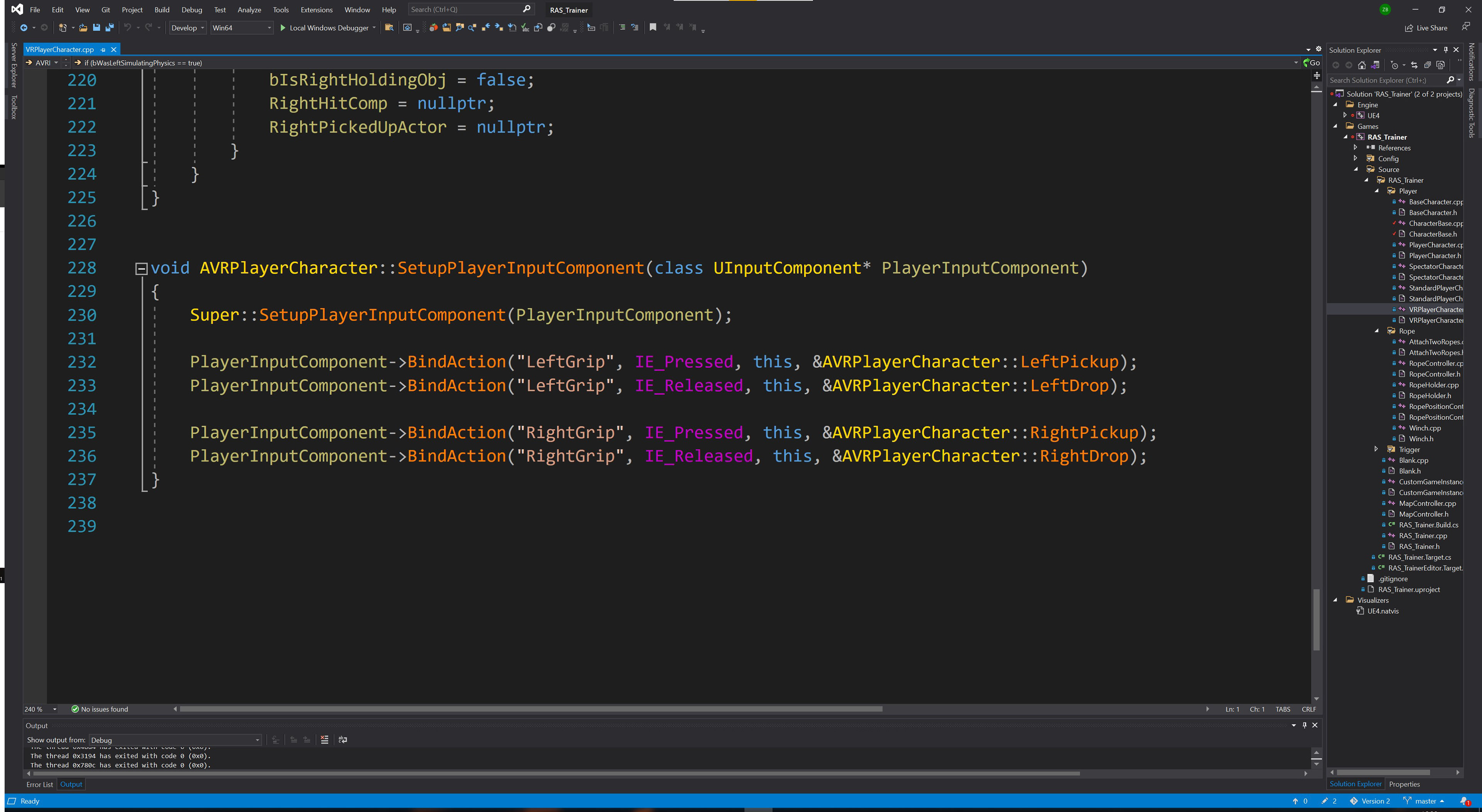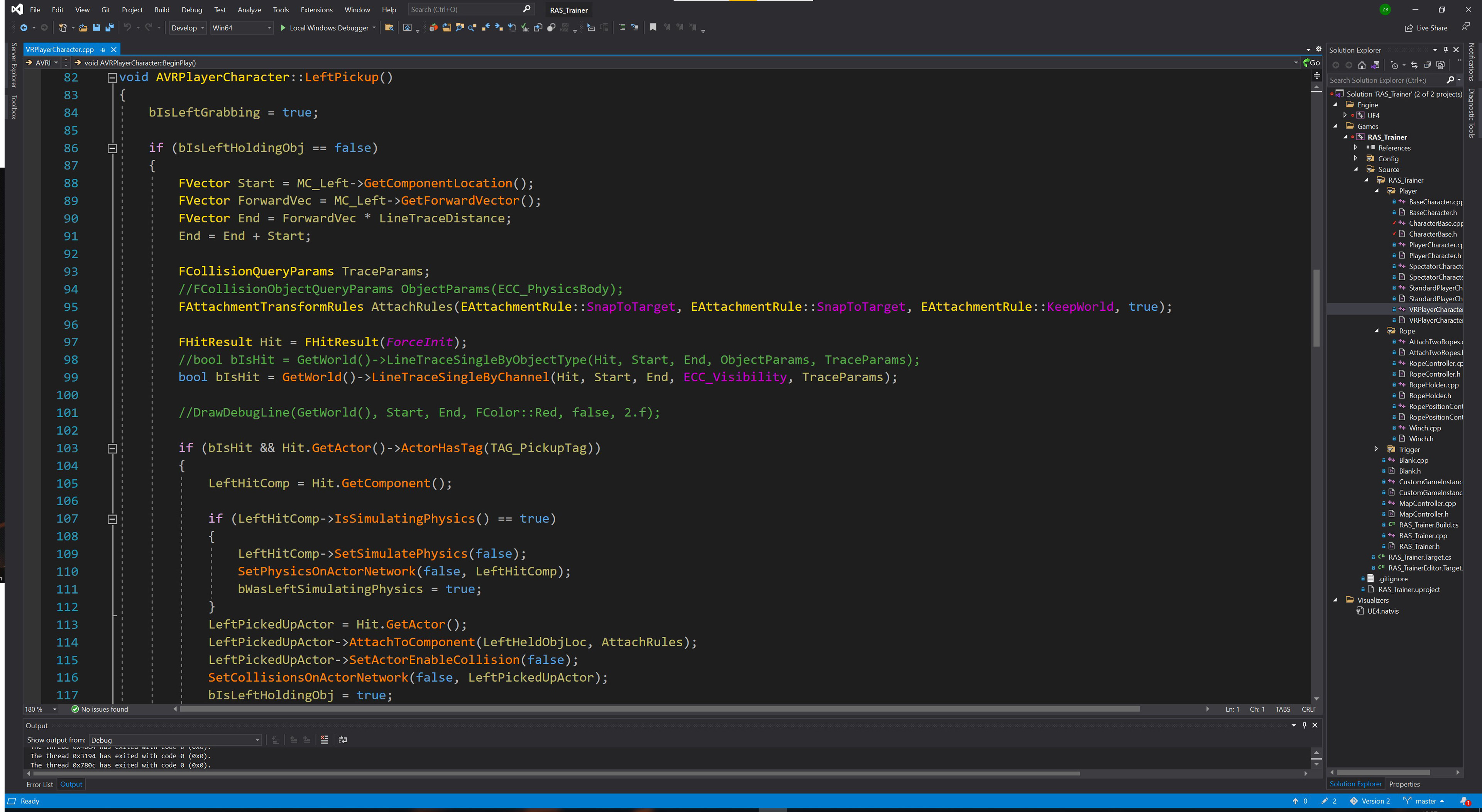A University of Portsmouth project, working for a brief set by the Royal Navy and Calytrix.
Working as a part of a team of seven individuals, a proof of concept was produced in Unreal Engine 4. The original plan was to create the trainer in Calytrix's Titan Vanguard simulation software, but the functionality was unable to be implemented. Instead, the team provided Calytrix with a document on how they could potentially improve their software going forward.
These findings were also presented by the group to the Royal Navy and Calytrix.
Personal Contributions:
VR Player Implementation
I implemented the VR player into the trainer, including movement and controller input. The animation of the hands also changes when the 'grip' button is pressed and released.
Bat Signals
Bat signals were created, and I added the functionality to be able to pick up the bats in order to replicate the needed signals during the RAS procedure.
When dropped, the bats return to their holder to ensure they were not lost.
It was said by the client that this functionality alone could act as a training system.
Standard Player Character
In addition to the VR player character, a character was implemented to be used with a keyboard and mouse, in case a virtual reality headset was not available.
This character had limited player functionality consisting of movement and the ability to pick up a single item.
Spectator Character
A spectator character was added to allow someone to oversee the entire procedure and watch the participants partake in the training.
The spectator can fly around the environment to quickly view different areas.

VR Character in Unreal Engine

VR Input




